Muhammed Fansa | Khaled al-Jeratli | Baraa Khattab
Its serious economic and health impacts in the short and long term did not prevent the problem of the deteriorating environment from being at the top of the agendas of the de facto authorities in Syria to remain the most marginalized issue despite its seriousness and the magnitude of its damage, after more than a decade that witnessed the fall of more than a million explosive shells during the battles between warring parties.
In recent years, the efforts of organizations and institutions concerned with environmental affairs have begun to reveal through studies the extent of the damage caused by military operations in Syria to its environment. However, according to experts, these studies were limited to specific geographical areas that sometimes lacked accuracy, which delayed finding comprehensive solutions and limited efforts to emergency environmental practices.
In this file, Enab Baladi sheds light on the effects of devastating military operations on the Syrian environment and discusses with experts the necessary solutions and international legal impact against those responsible for environmental pollution in conjunction with the Syrian regime’s government’s participation in the UN climate summit in the Emirates.
A million shells: A third of them poison the earth
In April 2022, the Carter Research Center issued a report highlighting the need to rid Syria of dangerous unexploded weapons, as the center suggested that there are more than 300,000 unexploded ordnances on Syrian territory.
The Carter Center collected and adapted unique and high-quality data, including from the Armed Conflict Location Event Data (ACLED) Project, to assess the likely concentration of UXO sourced from conflict events across Syria dating between December 2012 and May 2021. The result is a quantitative and geographic analysis that can be used to inform recovery efforts and negotiations around these issues writ large.
The report recorded no less than 972,000 uses of explosive munitions during 99,194 armed conflicts in the aforementioned study period, and about 62% of the total explosive munitions were ground-based munitions, while about 37% were air-launched munitions.
“If a failure rate of between 10% and 30% is applied to these findings, that would mean between 100,000 and 300,000 explosive munitions failed to detonate in Syria between December 2012 and May 2021. For comparison, it took 23 years to clear 86,000 pieces of UXO from Mozambique,” said the report.
Maysar al-Hassan, a professor at Al-Sham University in the Aleppo countryside, who participated in a study issued last April on “Toxic elements in the soil in northwestern Syria,” supported by the British James Houghton Institute, believes that it is difficult to count the number of exploded shells in Syria scientifically, due to the multiple types and sizes of missiles used in Syria.
Al-Hassan told Enab Baladi that environmental scientists have agreed that soil is affected by the leakage of chemicals from munitions (exploded and unexploded), reducing its fertility and suitability for agriculture. Explosions can also cause a change in the pattern of water flow and pollution, which harms the aquatic ecosystem and wildlife (plants and animals).
Al-Hassan pointed out that very little research has addressed the impact of wars on the ecosystem, attributing this to “government opacity.”
He mentioned several examples of this, including studies conducted on Iranian soil contaminated with munitions during the Iran-Iraq war, as it caused an increase in the concentration of lead and chromium to ten times the normal level.
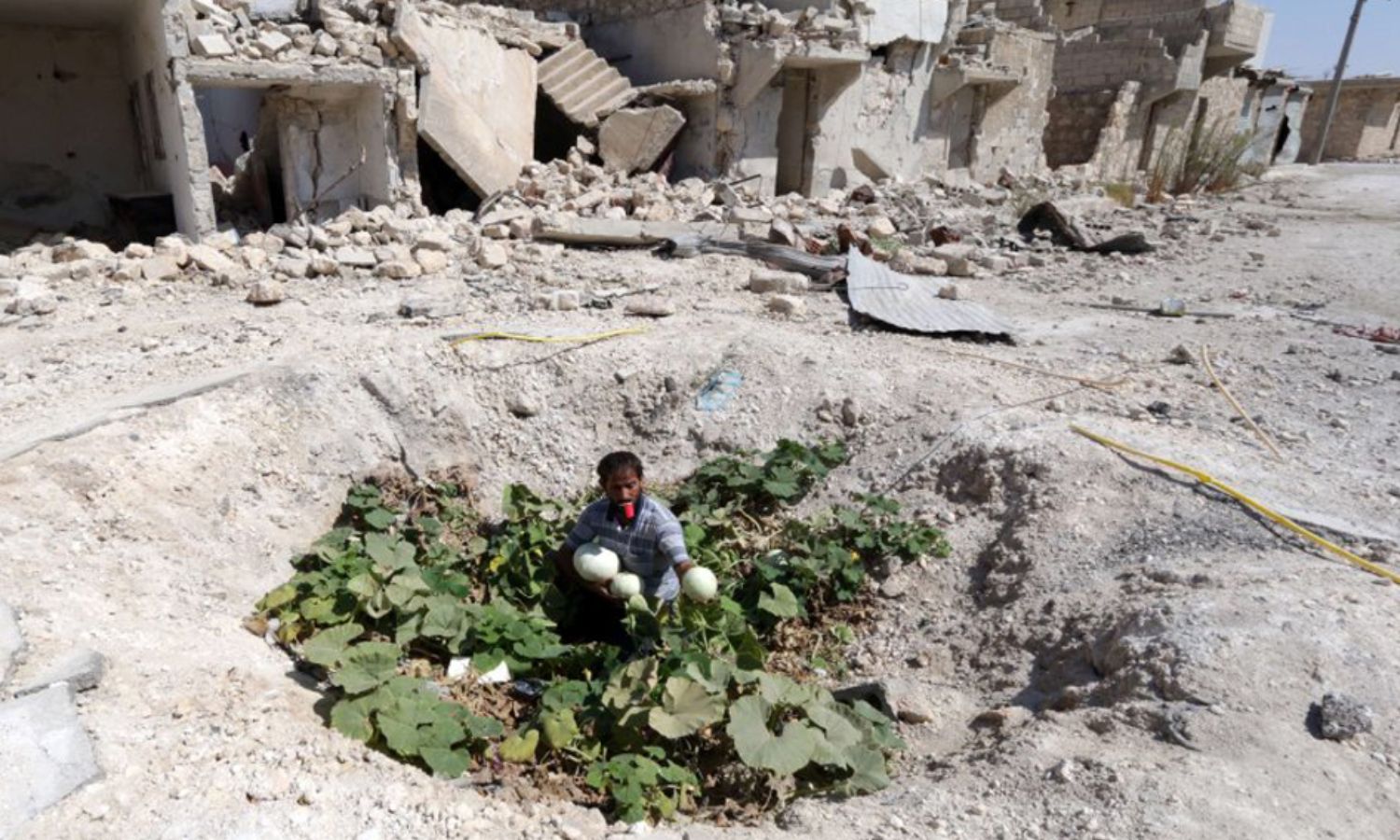
A Syrian man collects vegetables from a vegetable patch grown by local residents at the site where an explosive barrel hit a sewage pipe in the Baeidin neighborhood in the city of Aleppo, northern Syria (AFP)
What are the effects of the missiles?
There were many Syrian regions that were bombarded with explosive shells, but the study of their effects on the environment did not include all governorates due to restrictions on the entities that control them.
The northwestern region of Syria is one of the areas that has been and is still being bombarded with several types of explosive shells by Russian artillery and aircraft belonging to the regime forces.
The survey conducted by the Al-Sham University in cooperation with international researchers and with the support of the British James Houghton Institute, which covered the entire regions of northwestern Syria, concluded that the presence of nickel and chromium elements at levels exceeding the typical European guidelines thresholds for agricultural soil, and the concentration of cadmium and carbon monoxide increased by three times the concentration documented in neighboring Turkish lands.
According to al-Hassan, a professor at the University of Al-Sham who participated in preparing the study, the concentration of cadmium, zinc, and cobalt also exceeded the European danger thresholds. The most severe effect associated with the direct use of munitions was a clear increase in the concentration of copper, lead, and zinc.
The study’s authors attributed nickel and chromium pollution to intensive agriculture irrigated with wastewater and excessive use of fertilizers, and they suggested that the reason for the increased concentration of the rest of the pollutants was the heavy population activity in the camps and informal industrial areas.
As for the effects of this widespread pollution of water resources in northwestern Syria, through the accumulation of toxic elements in agricultural soil, it may lead to potential dangers to human health due to the transfer of pollutants from soil to plants or air and the arrival of pathogens to humans, according to al-Hassan.
Chemical weapons: Immediate effects and future distortions
The parties to the conflict in Syria, especially the Syrian regime, used various types of weapons to bomb cities and towns, such as explosive barrels and vacuum missiles and also used missiles loaded with toxic chemical gases such as Sarin and Chlorine.
Humans were not the only victims of these dangerous weapons, but their effects extended to water, air, soil, and animals.
The Syrian regime used weapons loaded with toxic chemicals in several areas, most notably in Eastern Ghouta suburbs, including Douma, which was bombed with toxic gases in August 2013 and 2018, and Khan Shaykhun town in the Idlib countryside in April 2017.
Zaher Hashem, environmental journalist, told Enab Baladi that chemical weapons leave long-term effects on the environment.
Hashem added that the Syrian regime used Sarin and Chlorine gas mainly because they are compounds that disintegrate quickly in the air in order to escape punishment, but the effects left by these weapons when they strike soil, water, and wildlife in nature worsen over many years.
Chemical weapons destroy agricultural soil and make it unsuitable for agriculture, which threatens livelihoods in the affected areas.
Their effects also result in the destruction of forests, which are an essential habitat for many plant and animal species, especially the destruction of fruit trees, which are an important food and economic resource for the population.
Chemical weapons are weapons of mass destruction that directly affect humans and lead to direct death, infections, liver cancer, neurological poisoning, and miscarriage of pregnant women. They also destroy livestock and fish, cause genetic mutations in humans and animal and plant species, and result in birth defects.
Zaher Hashem – Environmental journalist
Chemical pollution is not limited to chemical weapons. Rather, conventional weapons and explosive materials leave behind chemical elements and metals such as lead, mercury, copper, nitroglycerin, and tungsten, polluting soil, groundwater, and rivers. These toxic materials may reach the human body through the food chain. It also threatens agricultural crops, trees, forests, and animal species, according to Hashem.
The use of chemical weapons during armed conflicts is a war crime, and the use of these weapons is prohibited under the 1925 Geneva Protocol and the 1997 Chemical Weapons Convention.
The use of poisonous weapons or asphyxiating gases are crimes within the jurisdiction of the International Criminal Court (ICC) because they constitute serious violations of the laws and customs applicable in international and non-international armed conflicts.
The Security Council strengthened the ban imposed by the Chemical Weapons Convention with Resolution 1540 of 2004, which called on all states to adopt national legislation to prevent and punish acts prohibited under this convention.
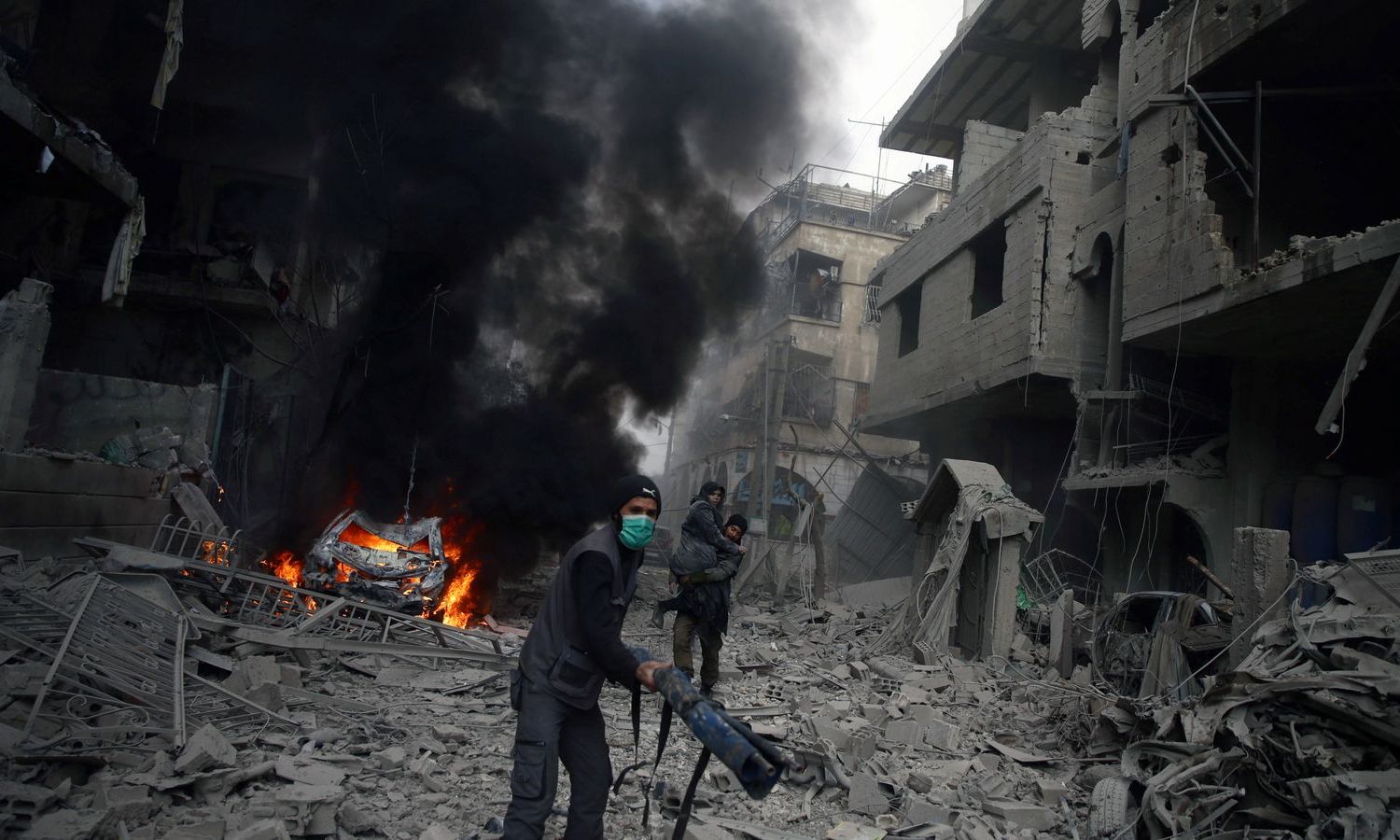
The effects of the regime forces’ bombing of neighborhoods in the capital, Damascus – 2018 (Reuters)
Syria: A Russian testing ground
Russia has the largest share in using and experimenting with many types of destructive weapons in Syria; as Russian Defense Minister Sergei Shoigu said in July 2021, “The Russian army has tested more than 320 different types of weapons during its operations in Syria.”
During his press statements at the Russian helicopter manufacturer RostVertol, the minister confirmed that the latter developed one of its helicopters as a result of military operations in Syria.
Russian President, Vladimir Putin, said in April 2020 that the increase in the export of Russian weapons to countries around the world is behind the practical testing of these weapons in Syria, despite the intense competition in this field.
He also indicated, in September 2019, that Russia was working to modernize its military equipment by 70% during 2020 after the experiments in Syria.
Academic Professor of Agricultural Sciences Abdul-Aziz Dayoub told Enab Baladi that there are elements involved in the manufacture of gunpowder, which is the basic element as an effective means of using weapons, the most important of which is lead, which has multiple effects. In humans, it is a toxic substance in the blood, and on agricultural soil, it is a heavy element. It does not dissolve in water.
There are also other active elements involved in the manufacture of gunpowder, most of which are heavy and insoluble, and at the same time, they combine with light elements to form toxic substances in the soil that make it unsuitable for agriculture, according to Dayoub.
Dayoub said that the Syrian environment was “saturated” with these toxic materials, in addition to the use of chemical weapons and nuclear waste that was buried in the Homs countryside and the Palmyra countryside and caused a wide-spectrum spread of cancers in Homs, Hama, and its countryside.
In a 2021 investigative study by economics researcher Ruba Jaafar, she suggested that the use of chemical weapons and explosives containing elements of heavy metals, fuel, solvents, and active materials would lead to the pollution of groundwater and soil, and to serious environmental problems for the future of the agricultural sector in Syria, which would affect an economy that has depended on agricultural production for years.
It will also result in the exacerbation of other forms of future environmental repercussions, such as drought, sandstorms, and decreased rainfall, indicating long-term consequences of the heavy use of explosives and chemical weapons in urban and non-urban environments in Syria and beyond.
Jaafar said, “Although humans always count the losses of wars by the number of dead and wounded among soldiers and civilians, the environment remains, in many cases, an undeclared victim of wars.”
A report issued by the Observatory on the Use of Cluster Munitions of the International Campaign to Ban Landmines, last September, documented at least 4,408 victims (dead or injured) of cluster munitions in Syria since July 2012, as the second country with the highest number of victims. Those registered after the Republic of Laos, while the number of victims in 2022 reached 90 victims of cluster munitions.
Cluster bombs are launched from the air or from the ground, in packages containing hundreds of small bombs that are spread randomly over large areas.
These munitions pose a threat and have a persistent impact because they do not target a specific target, and about 40% of them explode immediately, while unexploded bombs pose a continuing threat to the lives of civilians, especially children, and a future impact on the environment.
The United Nations General Assembly, by its resolution “A/RES/56/4” issued in November 2001, declared November 6 of each year as the International Day for Preventing the Use of the Environment in Wars and Military Conflicts.
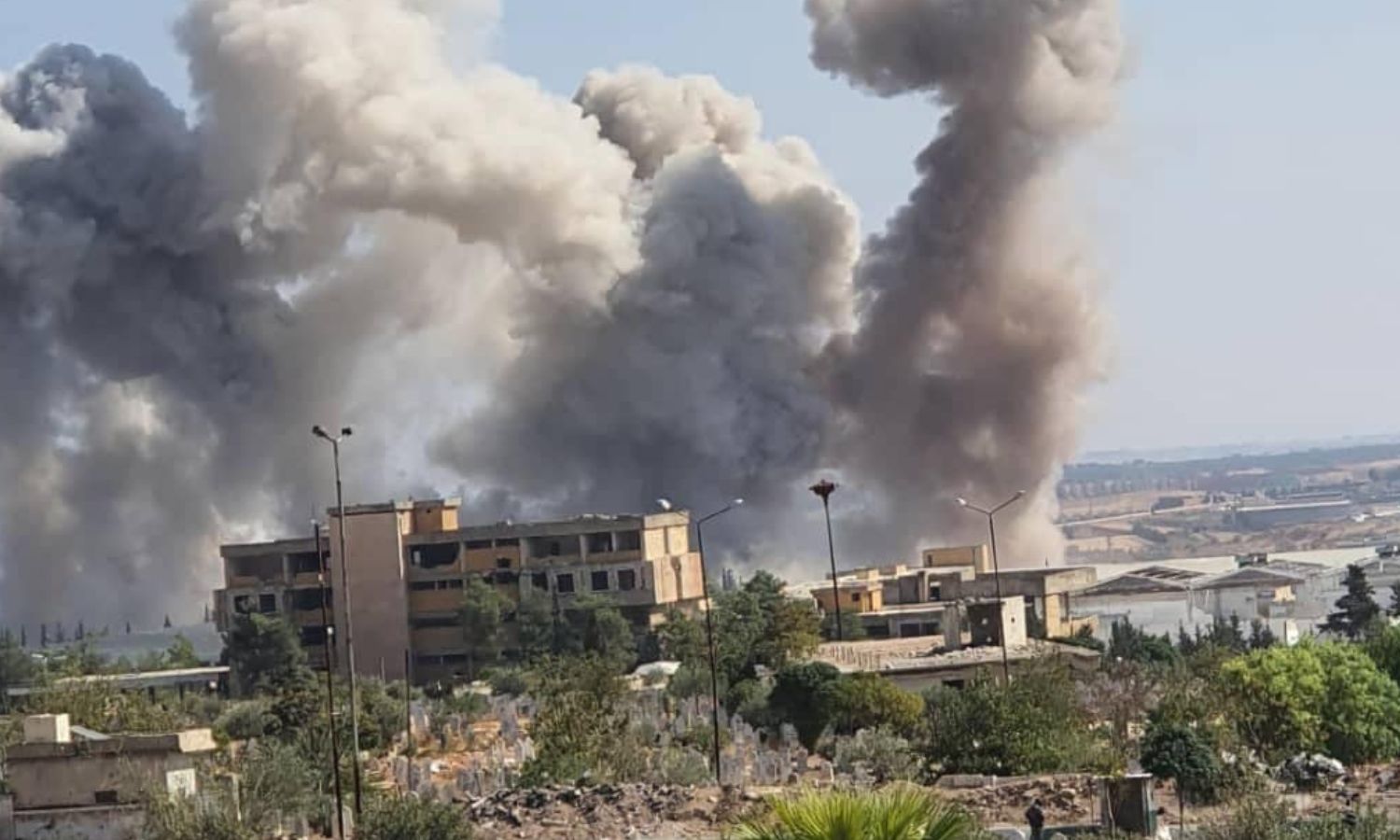
Russian bombing with vacuum missiles on the vicinity of Idlib city – October 14, 2023 (Facebook/Kafranbel Media Center)
War Remnants: Danger extends from humans to environment
The International Committee of the Red Cross defines remnants of war as “explosive ordnance of all shapes and types, abandoned or unexploded, that remain in a specific area after the end of an armed conflict.”
These ammunition include artillery shells, grenades, mortar shells, and other types of missiles, in addition to missiles in various forms.
The ICRC distinguishes between “unexploded ordnance,” which is considered “the most dangerous explosive remnants of war,” which do not explode naturally after being fired but may explode in many cases when “touched or moved,” and “abandoned explosive ordnance,” which during conflicts, they were left in unsecured locations without guards.
The joint annual report of the International Campaign to Ban Landmines and the Cluster Munition Coalition, issued on November 14, showed that Syria recorded, for the third year in a row, the largest number of victims of mines and explosive remnants of war as the report documented 834 victims throughout Syria for the year 2022, despite the start of the war between Russia and Ukraine this year, which came in second place in number of victims.
In the southern governorate of Daraa, for example, farmers abandoned their agricultural lands, due to repeated cases of explosions of objects from war remnants there.
While some workers in the agricultural sector refrained from practicing their profession because of the dangers surrounding it, which are manifested by mines and unexploded objects.
On April 4, the Syrian Network for Human Rights (SNHR) issued a report in which it said it had documented the spread of landmines across large areas in Syria, resulting in the deaths of 3,353 civilians, including 889 children, since 2011.
According to the report, the Syrian regime used mines before 2011, but its use of them doubled after the popular movement in March 2011, as it planted mines along the borders with Lebanon and Turkey during the beginning of the movement.
The report added that many parties to the conflict and the controlling forces used anti-personnel landmines, but remnants of war such as cluster munitions were recorded being used by only two parties: the Syrian regime and the Russian forces.
In a research paper presented by Dr. Sarah Njeri to the United Nations advisors in the field of mine action, she identified the spread of mines in agricultural areas as a cause of continued violence, the weakness of communities as a result of poor food security resulting from environmental pollution, and the difficulty of practicing agriculture.
Ruins leak toxins
Former International Criminal Court judge Howard Morrison of Temple Garden Chambers, the British environmental organization, released a report on November 8 about the Syrian regime’s responsibility for environmental devastation against the backdrop of Bashar al-Assad’s invitation to participate in the “COP 28” climate summit.
The report stated that the Syrian regime is responsible for “mass destruction and damage to the environment,” through the regime’s attacks and bombing campaigns that continued for years.
The report referred to a study conducted by the World Bank in 2017, which showed that between 14.9 and 5.3 million tons of debris had accumulated in the cities of Aleppo and Homs, respectively, due to military operations until that year.
Removing the rubble in Aleppo requires six years of continuous work and 26 million kilometers by truck (a unit of measurement for the distance that trucks travel to accomplish the task), and it will also take approximately two and a half years and 2.3 million kilometers by truck in Homs, while the report suggested that these numbers have increased since then.
According to the report, the presence of such an amount of debris poses a threat to the environment and public health.
It may contain a number of dangerous materials, such as unexploded ordnance, carcinogenic asbestos, cement, heavy metals, household chemicals, and combustible materials, and its removal will result in environmental damage, such as dust and carbon dioxide emissions.
Military operations have exacerbated problems related to water supply and sanitation in Syria, which increases the dangers of environmental contamination with contaminated water and sewage. The World Health Organization (WHO) reported in 2015 that the water supply infrastructure in Syria has been damaged and the availability of potable water inside Syria is at a third of pre-2011 levels.
In 2017, the World Bank assessed physical damage to 457 water supply and sanitation infrastructure centers in eight governorates. It was also found that about two-thirds of water treatment plants, half of pumping stations, one-third of water towers, a quarter of wastewater treatment plants, and one-sixth of wells were destroyed or partially damaged across Syria.
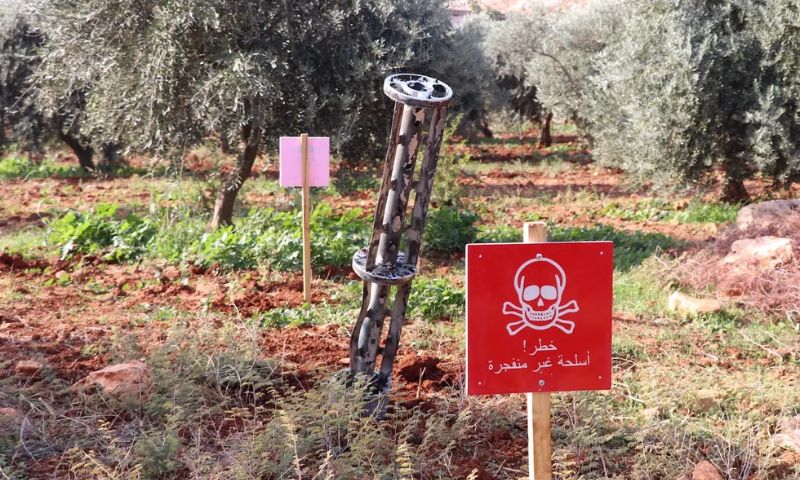
Remnants of a “9M27K” cluster missile after its submunitions were deployed in the Maram camp for displaced people near the village of Kafr Jalis in Idlib governorate, northwestern Syria – November 6, 2022 (White Helmets)
Solutions take decades
Agricultural soil affected by gunpowder needs several years to be rehabilitated in order to invest it, depending on the effect remaining in the soil. The longer it is, the more time the soil needs, which may reach 25 years.
The most important thing in treating it is exposing it to sunlight and planting it with legumes without eating them, as they are toxic, according to Abdul-Aziz Dayoub, the professor of Agricultural Sciences.
Soil treatment and mitigation of risks to human health in northwestern Syria must form part of urgent humanitarian relief work in the short term and part of economic and environmental recovery efforts in the long term, according to the recommendations of Maysar al-Hassan, an academic at the Al-Sham University.
In order to mitigate the effects of pollution in the short term, NGOs working with farmers should prioritize conducting a systematic regional survey that monitors the use of wastewater for irrigation and publishing quality data on soil, well, and river water used for irrigation.
An independent program must also be implemented to periodically take soil samples and analyze them to assess the risks of soil contamination with cadmium, cobalt, and mercury in particular, and then conduct studies on the absorption of toxic elements from the soil, dust, and smoke residues resulting from fires by the main crops in the region.
Maysar al-Hassan – A professor at Al-Sham University in the Aleppo countryside
Al-Hassan called for regional investment in agricultural and environmental engineering in order to better understand the dangers of pollution to the health of the population and to develop a consistent protocol for taking samples and analyzing them across the projects of organizations concerned with the environment and agriculture, with a focus on areas of heavy bombardment and areas contaminated with primitive oil “refineries,” known as burners and industrial waste.
The professor also called for stakeholders to be aware of the danger of pollutants resulting from the munitions that bombed the area, which may persist “for centuries to come,” and the need to focus efforts on treating soil contaminated with them, using sustainable, low-cost methods such as the use of biochar and plant remediation.
Work must be done to develop crop varieties that are resistant to pollution and climate change, while using partial irrigation, solar distillation, and others to manage water quality and reduce the demand for polluted water, according to the academic.
Al-Hassan added that such steps exceed the capabilities of the organizations currently working in northern Syria and require the capabilities of an organized state that works for a long time, but quick aid to the soil can currently be carried out to mitigate the deadly effects of pollution.
Regime’s government at Climate Summit; What are the goals?
Government promotion
Before the date of the Climate Summit (COP 28) in Dubai, with the participation of world leaders on December 1 and 2, the Syrian regime’s government invited to the summit began activities promoting its interest in the environment in Syria and holding other parties responsible for its deterioration.
The absence of the head of the Syrian regime, Bashar al-Assad, from the summit, despite receiving an Emirati invitation on May 15, was attributed by the Russian Nezavisimaya newspaper on November 28 to al-Assad’s fear of traveling to the UAE.
The newspaper considered that al-Assad’s absence is linked to the fact that the French authorities issued a warrant against him, and there is an agreement in effect between Paris and Abu Dhabi to extradite criminals, and Al-Assad’s participation would constitute a challenge to Abu Dhabi’s commitment to such arrangements.
On November 28, the American Coalition for Syria (ACS) called on France to submit a request to extradite al-Assad if he attended the summit.
The ACS published a statement in which it demanded that France direct the arrest request to the UAE.
On November 30, the Prime Minister of the Syrian regime, Hussein Arnous, arrived in the Emirates to head the delegation participating in the climate conference.
Reuters quoted the head of the Natural Resources Department in the Ministry of Agriculture of the regime’s government, Manhal al-Zoubi, and a participant in the delegation, as saying that Arnous will focus during his participation in the summit on “mobilizing funding for climate projects in Syria,” adding “Our primary goal is to attract projects and funding to implement important climate adaptation activities in Syria.”
On November 22, the regime’s government held a workshop on the report on the state of the environment in Syria, in which Arnous said, “Terrorism supported by evil forces in the world has directly affected the capabilities of the nation and the environment, with all its components, has not been spared from this evil.”
He pointed out that “unilateral sanctions and coercive measures” led to an increase in these problems and hindered recovery in various areas affecting the environment and humans.
For his part, the Minister of Local Administration and Environment, Hussein Makhlouf, focused his speech on the environmental impacts in areas outside the regime’s control in northeastern Syria, including primitive oil refining sites.
The regime’s government’s directive to annex the Ministry of State for Environmental Affairs in 2016 to the Ministry of Local Administration indicates the marginalization of the role of this ministry and the weakness of its activity.
The regime’s government is distancing itself from the responsibility for protecting the environment and the effects of climate change in Syria and holds it to the international community and developed countries, which was demonstrated by the speech of the regime’s government delegation participating in the 2021 climate summit in Scotland, in which it was stated, “The developed countries, as primarily responsible for the phenomenon climate change, to fulfill its legal and humanitarian obligations towards developing countries, by providing technical and financial support to implement adaptation policies and build capacities.”
The government added, “In the next stage, Syria needs to mobilize the support of the international community, to overcome the devastating effects of the environment and climate that the aggressive war has had on it.”
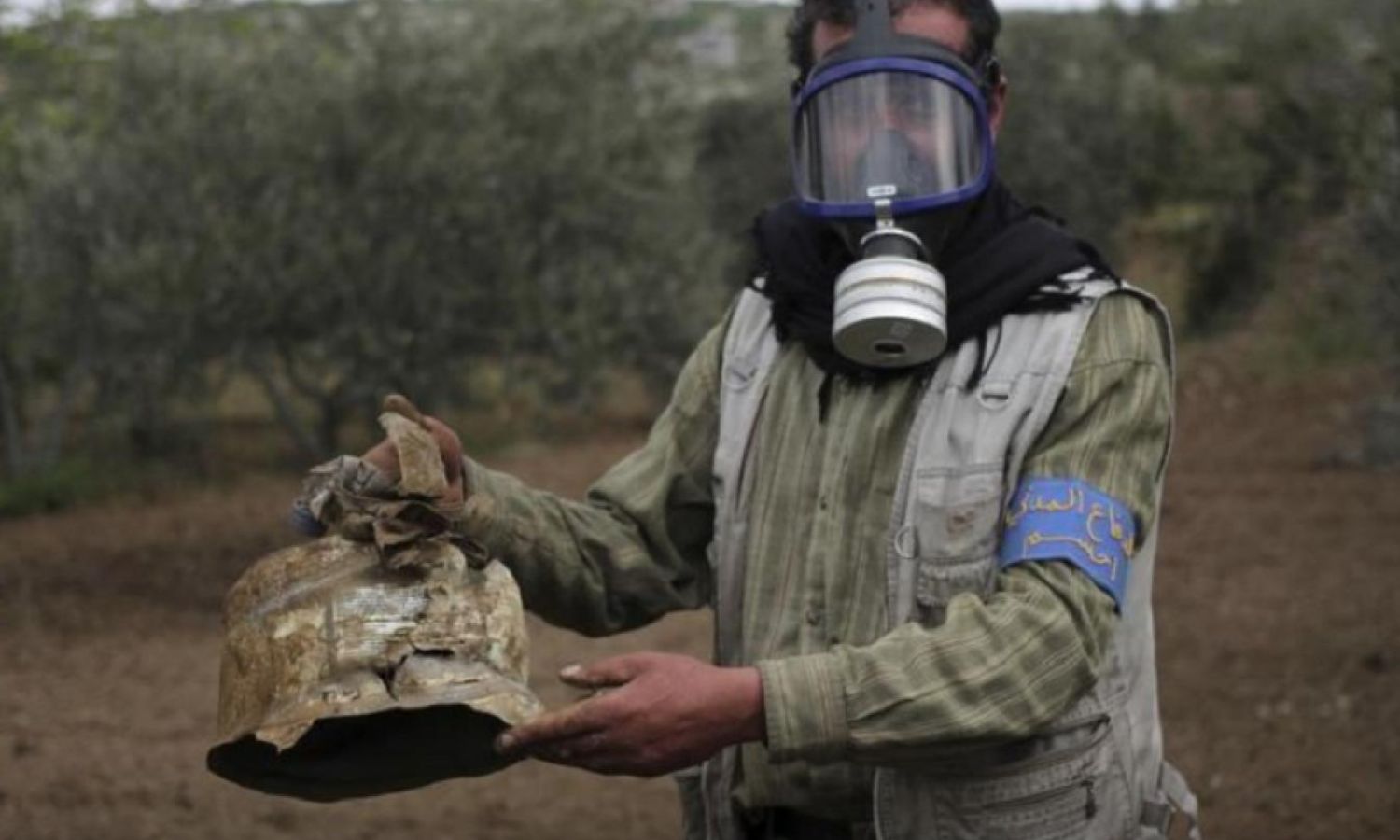
A civil defense member carries a damaged canister in the village of Iblin after an attack targeting the villages of Kansafra, Iblin, and Joseph in the Idlib countryside with chlorine gas, May 3, 2015 (Reuters)
Indirect criminalization under international law
Despite the impact of military operations over the past decade on the environment in Syria, there is no talk in international institutions and Western countries about holding the conflicting parties accountable for violations, with regard to the impact of military operations on the environment. Rather, one of the largest parties (the president of the Syrian regime) is claimed to have contributed to the violations, according to reports by environmental organizations to participate in the climate summit.
Dr. Wissam al-Din al-Okla, a doctor in international law, explained to Enab Baladi that causing widespread damage or destroying ecosystems or harming the health and safety of species, including humans, is considered a violation of the principles of environmental justice.
However, al-Okla added, saying that harming the environment or ecocide during war has not yet been listed as an international crime by the United Nations.
Al-Okla pointed out that there have been many international attempts in recent years to include “Ecocide” in the Rome Statute of the International Criminal Court and to adopt a unified definition for this crime.
Damage to the environment as a war crime is mentioned incidentally in Article 8 of the Rome Statute, which considers a violation a war crime if “a deliberate attack is launched in the knowledge that such attack will result in consequential loss of life and cause widespread, long-term and severe damage to the natural environment.”
Damage to the environment includes the use of heavy weapons and explosives, the destruction of forests, and the loss of biodiversity, in addition to the spread of solid waste, weapons residues, and mines, according to Syrian law.
Those who cause damage to the environment can be held accountable as a war crime in a comprehensive context that includes accounting for the use of internationally prohibited weapons such as toxic gases and other chemical weapons or weapons of mass destruction.
Wissam al-Din al-Okla – Doctor of International Law
Environmental journalist Zaki Droubi told Enab Baladi that the war launched by the Syrian regime destroyed almost all of the ecosystems in Syria and also polluted the soil and environmental infrastructure.
Droubi believes that the damage cannot be treated without stopping the war, which is increasing the pressure on the environmental systems in Syria day after day. So how will the damage be treated when there is a new bombing every hour that causes destruction and greater pressure on the environmental systems and pollutes them more and more?
Droubi held the Syrian regime responsible for the damage to the Syrian environment, indicating that it was only concerned with remaining in power and the continued state of corruption in the country.
There are rules and recommendations related to protecting the environment during armed conflicts within the framework of international humanitarian law because its damage is widespread and long-term, and its negative effects extend to successive generations, and with climate change, the links between it and the increase in the rate of migration, asylum, poverty, and the continuation or outbreak of conflicts increase.
Several human rights and environmental organizations denounced al-Assad’s invitation to the climate summit, including the British environmental organization Temple Garden Chambers, which recommended that al-Assad not be invited to “COP 28” in the Emirates, as he and his government are responsible for “a clear and ongoing environmental and humanitarian catastrophe in Syria.”
The Syria Campaign Organization launched a petition asking the host Emirates to cancel the invitation of the head of the Syrian regime to attend the 28th session of the World Climate Action Summit, which gives him “the ideal opportunity to whitewash his crimes against humanity in his first international conference since 2011.”
The human rights organization Human Rights Watch (HRW) had previously criticized al-Assad’s invitation to attend the climate summit, describing it as “disgraceful” to take advantage of a conference aimed at stimulating ambitious climate action to return the regime’s government to the international arena, without any attempt to ensure accountability for its major violations.
if you think the article contain wrong information or you have additional details Send Correction
النسخة العربية من المقال
-
Follow us :












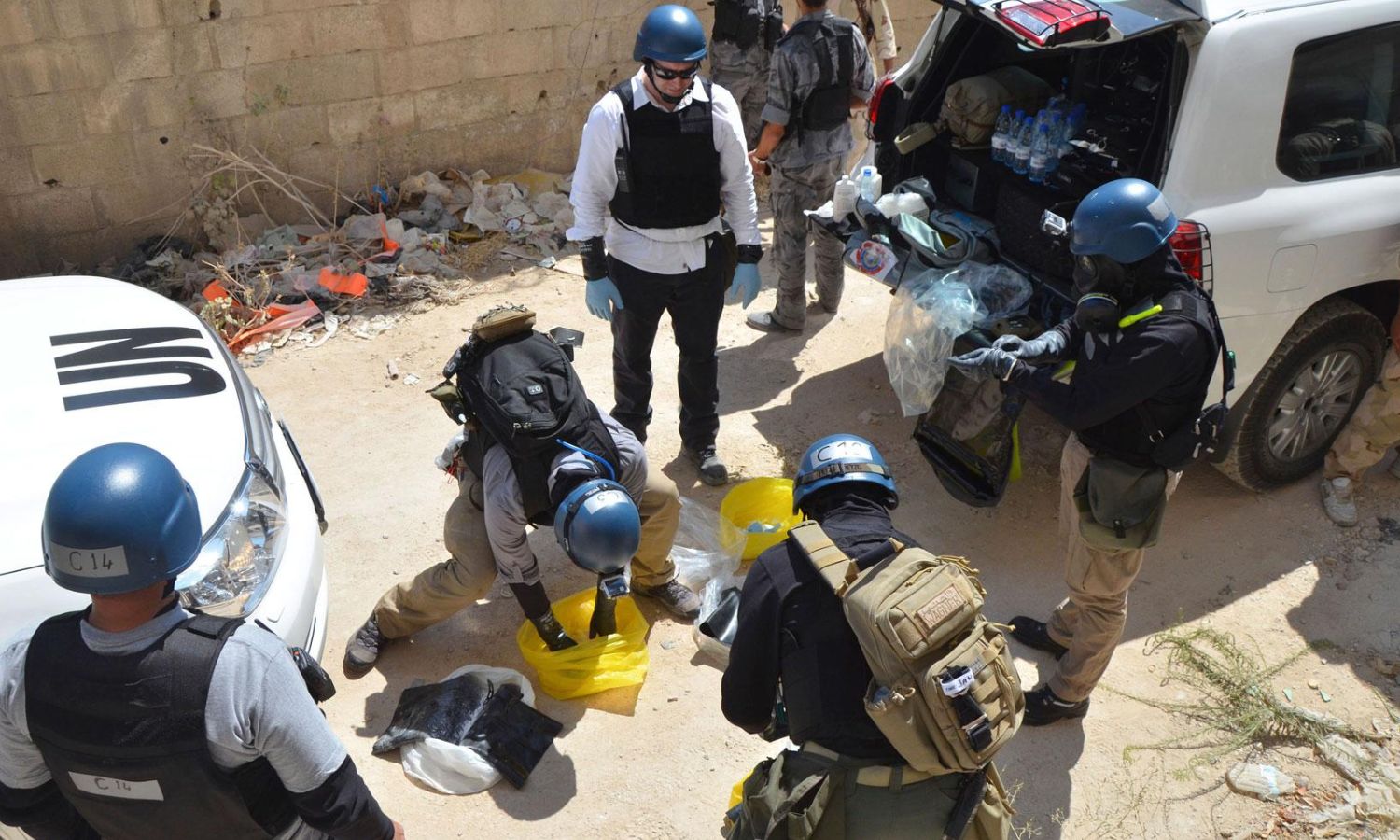
 The fact-finding mission of the Organization for the Prohibition of Chemical Weapons during its work in Syria (Reuters)
The fact-finding mission of the Organization for the Prohibition of Chemical Weapons during its work in Syria (Reuters)





 A
A
A
A
A
A
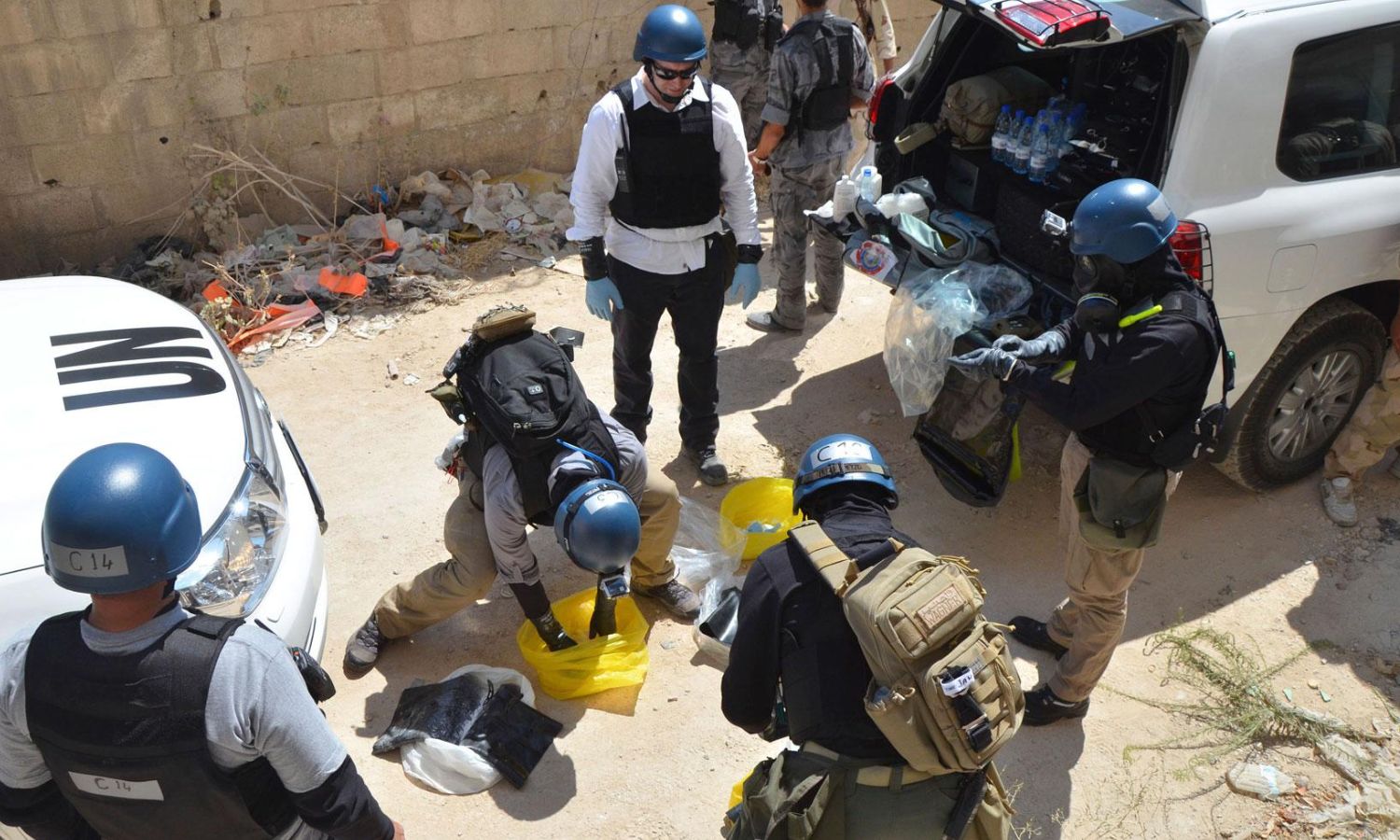


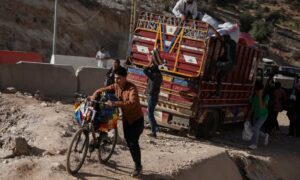
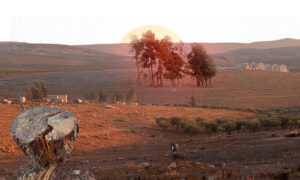
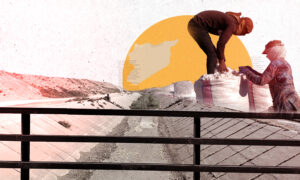

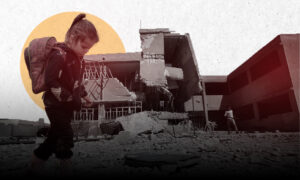
 More In-Depth
More In-Depth